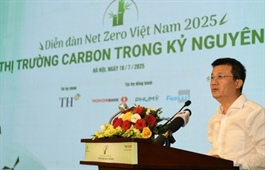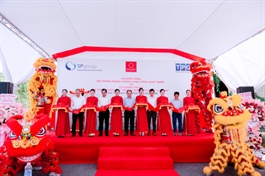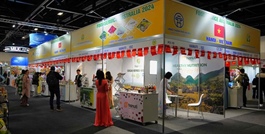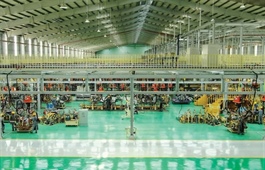Việt Nam’s wood industry faces market shifts, looks towards new horizons
Việt Nam’s wood industry faces market shifts, looks towards new horizons
While long considered a strong export sector, local enterprises are now re-evaluating their strategies to not only sustain growth but also reposition Vietnamese wood products on the global trade map.
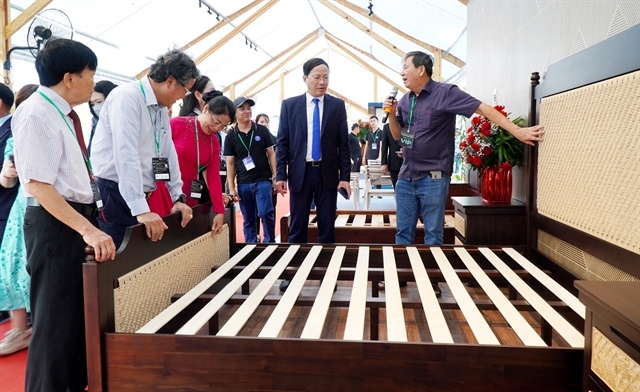
Wooden furniture from Vietnamese enterprises on display at the Q-FAIR 2025 International Exhibition, held earlier this year in Bình Định Province (now part of Gia Lai Province). VNA Photo |
Amid global economic uncertainties and tightening trade policies, Việt Nam’s wood industry is navigating through significant headwinds.
While long considered a strong export sector, local enterprises are now re-evaluating their strategies to not only sustain growth but also reposition Vietnamese wood products on the global trade map.
According to Nguyễn Liêm, chairman of the Bình Dương Furniture Association, major shifts in trade policies among importing countries have been felt since early this year.
Although Vietnamese wood products have been sold to over 160 countries and territories, the US remains the largest market, accounting for nearly 50 per cent of the industry's export value.
This means that any fluctuation in the US regulations creates a ripple effect across the entire industry.
Recently, the US Department of Commerce (DOC) initiated anti-dumping and countervailing investigations into plywood imported from Việt Nam.
The action has placed more than 130 Vietnamese timber processing and exporting companies under scrutiny, casting uncertainty over one of Việt Nam’s most valuable export categories.
Despite this, the Ministry of Agriculture and Environment (MAE) has set an ambitious export goal for the wood sector in 2025 — US$18 billion.
In the first six months of the year, the export value of timber and forest products was estimated at over $8.2 billion, up 8.9 per cent compared to the same period in 2024.
Yet, global geopolitical tensions and trade policy shifts continue to threaten the feasibility of this target.
Besides the US, the European Union has also implemented new technical and legal requirements.
Regulations such as the EU Deforestation Regulation (EUDR), the Carbon Border Adjustment Mechanism (CBAM), and the Corporate Sustainability Reporting Directive (CSRD) are demanding more rigorous environmental and traceability standards.
In Japan, meanwhile, policy changes are affecting wood pellet exports. Requirements for transparent, certified sourcing and fluctuations in electricity pricing are influencing both production costs and export competitiveness.
In addition to trade barriers, the domestic wood industry is contending with challenges in raw material supply.
Huỳnh Quang Thanh, director of Hiệp Long Co Ltd, said that the price of imported wood had increased due to global supply restrictions. “We are facing mounting pressure on production costs,” he said.
Moreover, Việt Nam’s wood exporters are in fierce competition with major global players such as China, Malaysia and Indonesia — countries that boast advanced processing technologies, lower costs, and longstanding supply chains.
Strategic response
In response to the ongoing investigations, the Việt Nam Timber and Forest Product Association (VIFOREST) has said it is preparing to participate in the US hearings.
The aim is to clarify that Việt Nam’s plywood industry merely complements, rather than harms, the US domestic sector.
Meanwhile, the MAE is actively coordinating with US governmental bodies to resolve the issues through dialogue and technical clarification.
Experts have urged Vietnamese wood businesses to expand into new markets to reduce overreliance on traditional buyers.
In particular, such regions as the Middle East, South Asia, Africa, Latin America, and Eastern Europe have emerged for their growing demand for furniture, construction timber, and value-added products.
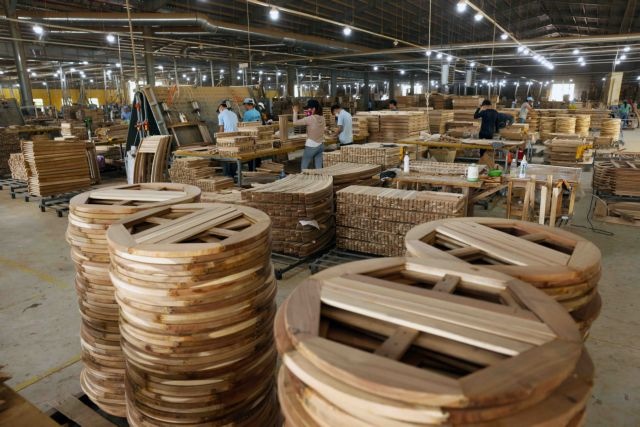
Wooden furniture from Vietnamese enterprises on display at the Q-FAIR 2025 International Exhibition, held earlier this year in Bình Định Province (now part of Gia Lai Province). VNA Photo |
Exploring new markets
Among these, the Middle East offers promising opportunities. The United Arab Emirates (UAE) and Qatar have demonstrated strong demand for luxury interior and exterior wooden furniture, especially for high-end hotels and resorts.
Vietnamese enterprises are encouraged to participate in trade fairs such as Index Dubai, build partnerships with regional distributors, and obtain international certifications including FSC and PEFC to enhance market credibility.
India, too, is becoming an attractive destination for Vietnamese wood products.
Rapid urbanisation, rising incomes, and a preference for compact, modern furniture have made online platforms like Amazon India and Flipkart particularly lucrative.
Vietnamese exporters report strong sales growth in lightweight, space-saving products suitable for Indian apartments and offices.
The ongoing negotiations for a Free Trade Agreement (FTA) between Việt Nam and India are also expected to reduce import tariffs from 10 per cent to 5 per cent, further boosting competitiveness.
If signed, the FTA could lay the groundwork for deeper economic integration and longer-term stability in bilateral trade.
Sustainability, technology upgrades
In the face of these pressures, the Vietnamese wood industry is aiming to elevate its standards.
A central part of the strategy is ensuring that all wood used — both domestically and for export — comes from legal, verifiable sources.
There is a growing push to certify supply chains with international standards and improve environmental transparency.
The MAE has also called for at least 80 per cent of wood processing and storage facilities nationwide to meet advanced technological benchmarks.
This transition would allow Vietnamese firms to meet the increasingly complex technical and environmental demands of foreign customers.
At the same time, the global shift in supply chains — including companies looking to diversify away from Chinese sourcing — offers Vietnamese firms an opening.
By investing in compliance, certification, and efficient logistics, they can become a trusted alternative in the global wood product market.
According to VIFOREST, with proper orientation and coordinated efforts between the State and enterprises, the wood industry can not only overcome current challenges but also strengthen its global standing.
“We must move beyond survival strategies and enter a phase of strategic transformation,” the association said.
With global demand patterns changing and traditional markets becoming more unpredictable, diversification is no longer optional — it is vital.
Whether through entering emerging markets, upgrading processing technology, or enhancing legal compliance, Việt Nam’s wood industry is laying the groundwork for a more resilient and competitive future.
As one of the country’s top export earners, the industry’s ability to adapt will determine not only its own trajectory but also Việt Nam’s broader reputation in sustainable and value-added manufacturing.
- 10:35 19/07/2025







